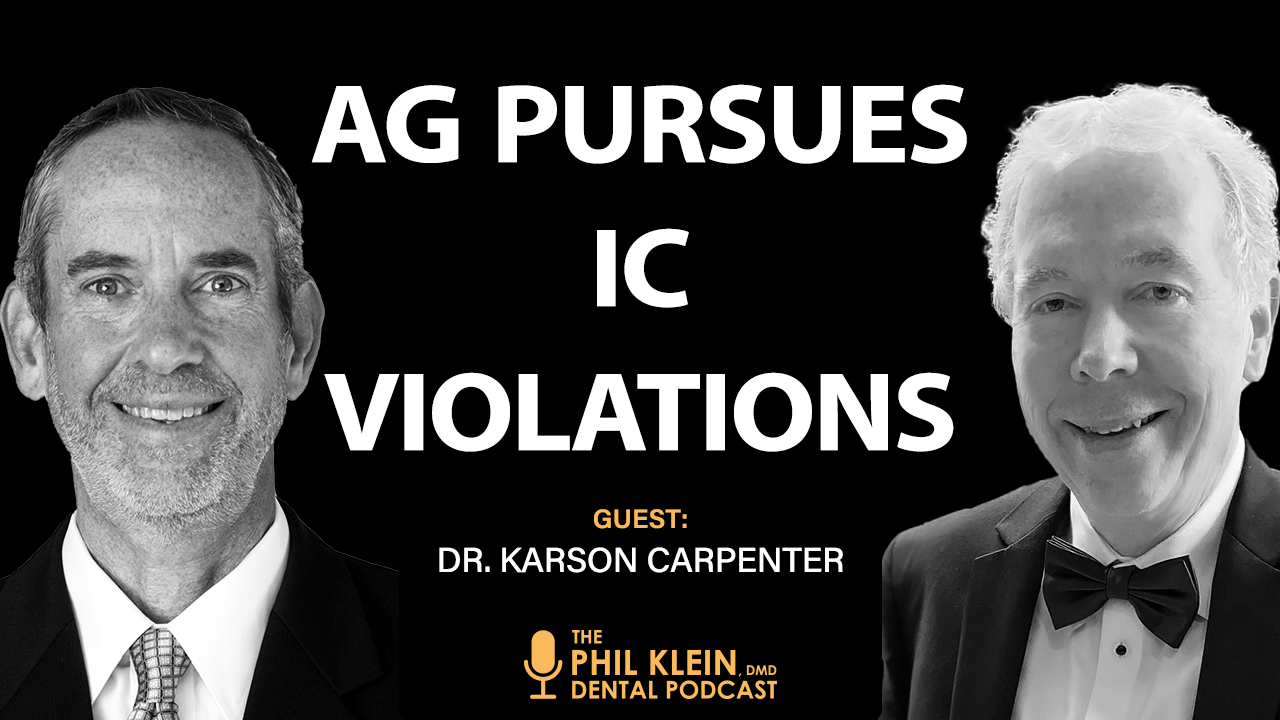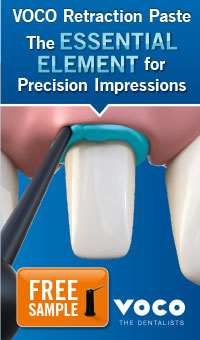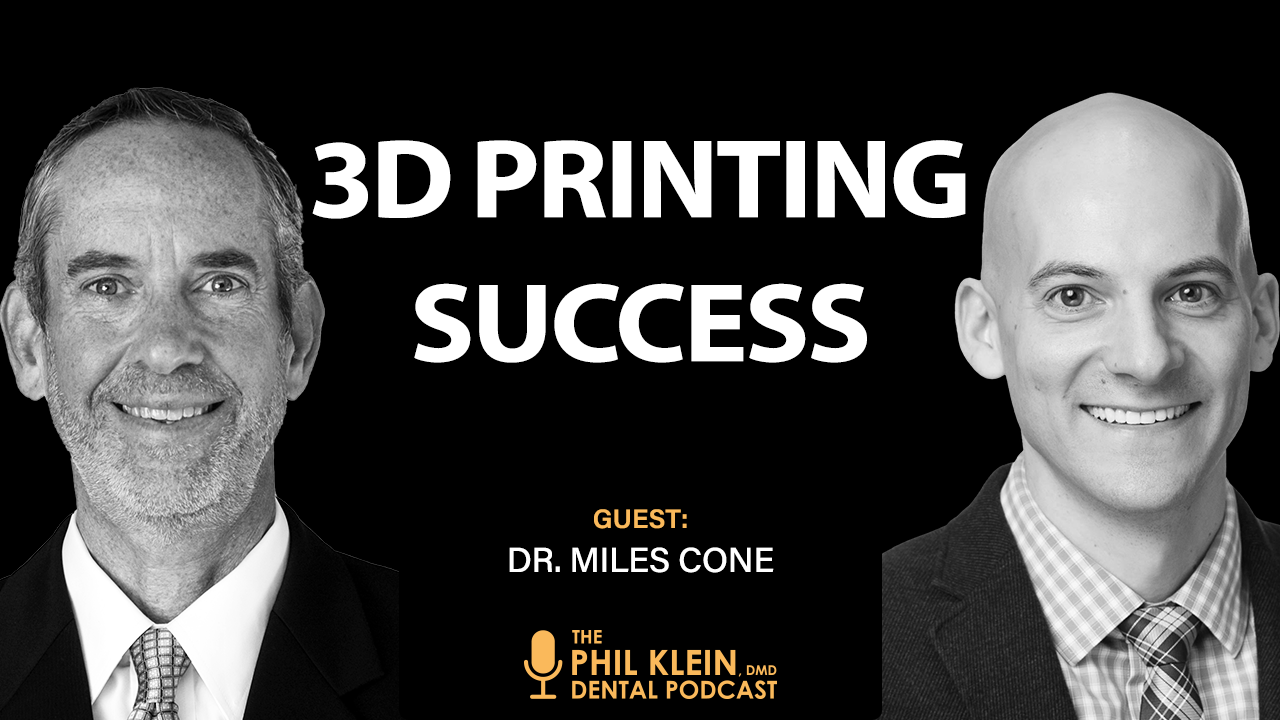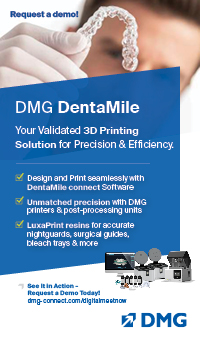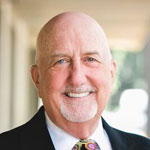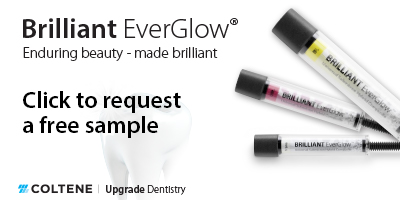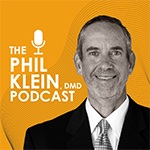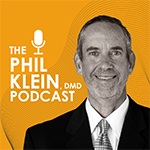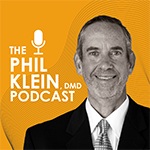Zirconia and Lithium Disilicate are the 2 most popular current materials for crowns in the US. Although they can looks very similar with their excellent esthetic properties, the materials themselves require different pre-cementation protocols and materials. Understanding the proper way to treat each material before final cementation can effect the long term clinical performance. Additionally, because of the difference in the strength of each material there can be several "best" choices of cements that can be used. This CE webinar is created to discuss and demonstrate the materials, techniques and protocols specific to each material.
It seems so easy doesn’t it? Yet most people struggle with one or more aspects of direct composites. In this CE webinar, join us as we break down the common areas that we struggle with and explain simple solutions to those problems.
Composite restorations are the foundation of modern dentistry, but achieving consistent esthetics, strength, and efficiency remains a daily challenge. This one-hour CE webinar will explore the science behind bulk universal composites and provide practical clinical techniques for anterior and posterior restorations. Participants will gain confidence in handling, shade selection, and finishing strategies to maximize outcomes and efficiency in practice.
Zirconia has established itself as one of the most versatile and reliable materials in contemporary restorative dentistry. With advancements in CAD/CAM technology and speed-sintering protocols, zirconia restorations have become more efficient and predictable than ever before - particularly for implant-supported prosthetics. This evidence-based CE webinar will explore the expanding role of zirconia in modern chairside dentistry, with a special focus on restoring dental implants using the long-awaited hybrid zirconia implant abutment block. This innovative material offers unprecedented versatility, enabling clinicians to design and fabricate either screw-retained or cement-retained implant restorations from a single block.
Participants will gain practical insight into clinical case selection, optimal preparation design, and strategies to streamline the zirconia workflow—from digital impression to finishing and delivery. Emphasis will also be placed on bonding and cementation protocols critical to the long-term success of zirconia restorations. You won’t want to miss Dr. Dhaval Patel share his experience and knowledge!
This CE webinar explores step by step planning and workflow designed to maximize the longevity of indirect cosmetic restorations. From diagnosis to photography communication with the ceramist, as well as, isolation, bonding protocols to the final delivery, each phase plays a crucial role in creating restorations that stand the test of time. Learn how to integrate clinical precision with modern techniques to endure predicable and durable outcomes for the patient.
Join us for a compelling CE webinar featuring Dr. Boeskin, a respected advocate for biomimetic dentistry, as he shares his candid perspective on transitioning to zirconia-based restorations. Once hesitant to embrace zirconia due to concerns about its compatibility with minimally invasive techniques, Dr. Boeskin now integrates it confidently into his practice — thanks to major advances in CAD/CAM technology and material science. Whether you're skeptical about zirconia or seeking to optimize your restorative workflow, this CE webinar offers both clinical wisdom and practical strategies to guide your material decisions.
Restorative dentistry often delivers the best results when teeth are ideally positioned before treatment begins. This 1-hour CE webinar explores how clear aligner therapy can be used strategically to create a foundation for long-lasting, esthetic, and functional restorative outcomes. Participants will learn how to identify cases where minor tooth movement simplifies restorative procedures, reduces invasiveness, and enhances patient satisfaction. The webinar will cover treatment planning principles, sequencing aligners with restorative phases, and effective patient communication to encourage acceptance of pre-restorative orthodontics. Through case examples, clinicians will gain practical skills to integrate aligner therapy seamlessly into everyday restorative care.
Zirconia and lithium disilicate (eMax and others) are the two most common direct restorative materials. Predictable long term cementation success is dependent on the proper pre-cementation treatment and understanding the different cement options available. As we currently do not have a universal it is important to understand the different cement options to make an informed decision. This CE webinar is designed to review the proper pre-cementation protocols and discuss the different cement categories to help the viewer create a workflow and thought process that will increase the predictability of their restorations.
The success rate of dental restorations varies significantly depending on the restorative material used, and the protocols the clinician employs given the clinical situation. This CE webinar is designed to provide dentists with crucial insights into the most commonly used direct and indirect restorative materials in daily practice and how clinician’s strategies and protocols in using these materials impact the success rate of dental procedures, improving both efficiency and outcomes.
This CE webinar will examine how technology has made it possible for clinicians to turn any prepped veneer case into a no-prep case, making our treatment much more conservative, and more acceptable to the patient. With today’s high-strength ceramics and adhesive cementation protocols, veneers can be made as thin as 0.3mm, making esthetic no-prep veneers possible, if the teeth are in the correct position and you're utilizing an esthetic, adhesive cement. No-prep veneers are more difficult to seat than prepped veneers or crowns, and a live demonstration will show a seating technique to mitigate those difficulties and the proper cementation protocol to create lasting, esthetic restorations.
With so many choices in materials and available cements, chaos may ensue when deciding to lute or bond each restoration. There has to be a better way to understand and ensure long-term success for our restorations. This CE webinar is designed for the attendee to gain confidence in their cement selection and handling of each restoration.
Dental materials have evolved alongside CAD/CAM technology at a relatively rapid pace. Understanding the fundamental nature and behavior of dental ceramics and cements is an integral part of the decision-making process in restorative dentistry. The correct selection of materials and understanding the limitations of each dental material will help improve clinical success. This CE webinar provides a comprehensive classification of indirect restorative materials and their clinical applications, with the goal of equipping clinicians with the necessary knowledge to evaluate and correctly apply emerging materials.
As adhesives and cements continue to evolve, change, and improve, it becomes more difficult for restorative dentists to keep up with the latest advances. With increasingly higher patient expectations for long term clinical success, it is important that dentists have an understanding of these materials in order to make sound decisions on what to use when and why. This CE webinar will discuss the different generations of adhesives and categories of cements including those with bioactive properties. Clinical cases will be shown to demonstrate the use of these adhesives and cements including the proper protocols that must be followed.
This CE webinar will deal with numerous aspects of comprehensive restorative aesthetic dentistry and efficient patient care in today’s dental practice. We will discuss how to make routine dental procedures such as adhesion and direct resins more predictable and efficient using the latest material technologies. Also discussed will be the indirect restoration protocol including preparation design for the current restorative materials and the use of impression materials vs digital technologies. Insertion protocols will also be addressed to aide the clinician in developing a foolproof method to deliver high quality, long-lasting restorations.
Have you noticed the shift in dentistry? Patients expect their dental care to be easier, delivered in a shorter treatment time, and painless. As clinicians, we understand the benefits of conservative restorative approaches and want to promote them at every opportunity. Given the advancement of early diagnostics, minimal intervention becomes even more paramount using cutting-edge technology. This CE webinar will discuss guiding principles for contemporary adhesive preparations using as little intervention as possible utilizing a new roll-out class of minimally invasive dental burs that provide a major impact. Learn how these burs can navigate a variety of current dental materials and tooth anatomy.
This is a CE webinar about real dentistry for real people by a real dentist! Dr. Glazer has been practicing for 50 years and knows what materials, products and techniques will make your day at the office easier, more productive and fun! This unique webinar will discuss what’s tried and true, and what’s new. Topics may include adhesives, composites, prevention, provisional materials, tissue retraction, lasers, rotary cutting instruments, curing lights, and patient management tools.
To provide patients with the best adhesive restorative dentistry, we are required to have absolute isolation and a firm understanding of bonding principles. Upon completion of this CE webinar, the student will be able to:
• Understand the importance of rubber dam isolation
• Be familiar with the basics of isolation
• Understand the fundamental principles of bonding
Composite resin injectables are highly versatile materials that can be used in numerous scenarios to enhance cosmetic dental practices in a minimally invasive manner, while also facilitating everyday general dentistry. Mastery of composite dentistry, understanding proper adhesive protocols, and establishing effective isolation techniques are crucial steps toward gaining confidence in the functional outcomes of these restorations. In this CE webinar, our goal is to educate participants on how to confidently place predictable composite injectable restorations in both the esthetic zone and posterior teeth. We will cover various case types, including the increasingly popular fiber injectable composites used for build-up procedures. Additionally, we will provide an overview of the cementation protocols for indirect porcelain restorations using injectable materials.
Lithium Disilicate is one of the two most commonly used materials for crowns and veneers. Many dentists know this material as eMax, as eMax is the current market leader is this catagory of material. To ensure proper adhesion and increase the longevity of lithium disilicate restorations careful attention should used to prepare the restoration for delivery as well as proper material selection for bonding and cementing the restoration. This CE webinar will discuss and demonstrate the materials and techniques to improve your efficiency and success with lithium disilicate restorations. This webinar is designed for the education of dentist and dental assistants, as a number of the steps involved are frequently performed by chairside assistants.
If we can get abs in 7 minutes why can't we beat that time for a crown prep!? Our patients love us for the relationships we build with them, not for our crown margins. But what if we can deliver precise and EFFICIENT crown preps, conserve tooth structure, and give them a restoration that can last decades? Ultimately, they will love that too!
There is a concept in dentistry that somehow adhesion is better and yet we see amalgams and crowns, held on by zinc phosphate cement, are still working in patients mouths 40+ years later but we see failure rates and replacements of various adhesive dentistry in 5-10 years. Where techniques use to be more simplistic with less steps and basic fundamentals we achieved success, and now we throw out many of those concepts and replace them with adhesion, we expect to find longevity. Are you seeing longevity or are you seeing more sensitivity, problems, failures or costly redos? This CE webinar is a look at where we are at with modern adhesion and what we believe we know. The goal is to give you some systems, tools and thoughts to consider to help you and your patients to have better longevity and success in the restorative dentistry you provide.
Achieve success in creating lasting indirect restorations as a clinician. Emphasizing proactive case planning and meticulous preparation with the right tools is essential for favorable outcomes. Proficiently capturing both digital and traditional impressions ensures precise communication with the lab, contributing to well-fitted restorations. Master the final bonding and cementation processes to attain excellent results in your clinical practice.
The secrets to long lasting restorations are partially under our control and partially determined by attributes within the materials used. Strength is important. Lower levels of shrinkage are key. But so are preparation guidelines, minimizing water and saliva contamination, as well as occlusal forces. Dr. Peter Auster analyzes the benefits of some of today’s best composites as well as ways to optimize their lifetime.
Advancements in technology and materials have shifted the field of dentistry. As a result, providers opt for more conservative restorative options for enhanced smile esthetics. Additive and minimally invasive restorations rely on chemical adhesion over mechanical retention with both their direct and indirect restorations. The road to reliability in adhesive dentistry is paved through consistency and reliance on adhering to science. Developing systems and protocols and sticking to them ensures long term stability with cosmetic restorations, which in turn results in happy patients with reliable outcomes. But how does one develop the proper systems and protocols? In this CE webinar, providers will learn how to simplify yet optimize their isolation techniques and bonding protocols to achieve more predictable long-term success with both their direct and indirect restorative outcomes.
A vast majority of the indirect restorations place in the dental practice currently are either fabricated from zirconia or lithium disilicate. The popularity of these materials is due to their excellent esthetics, durability and can be fabricated at a reasonable fee. But these materials are different and a significant factor in the clinical longevity of these materials is following correct clinical protocol at delivery and an understanding of the what the best choices of cement materials that are currently available. This CE webinar will discuss the appropriate protocol for the pretreatment of these two materials to maximize the retention of each type of restoration. Additionally, the webinar will discuss the different categories of dental cements currently available and which cements are better choices for each type of material and the clinical situation presented.
Bonded indirect restorations on teeth and implants have many applications in esthetic dentistry. This CE webinar presents strategies for analog and digital workflows, CAD-CAM, and adhesive technologies designed to offer the best outcomes.
The popularity of zirconia has exploded in the dental space over the last couple of years but not all zirconias are the same. This CE webinar will focus on the different types of zirconia and explain the pros and cons of each. Additionally, it will explore same day workflows with zirconia crowns, starting with crown prep design and ending with different cementing and bonding protocols.
There is a lot of confusion regarding how to connect a zirconia restoration to a tooth. Some of the concepts that will be covered are how do you clean or decontaminate the zirconia to what type of cement to use, and can you actually bond to zirconia? This CE webinar will eliminate confusion of how to best deliver a zirconia restoration with various types of materials and preparation designs so that you can remove all of your questions and concerns so that you can become confident with your materials and techniques.
Dentin bonding and minimally invasive dentistry began with Dr. Takao Fusayama and his concepts of etching dentin and chemical bonding in 1978. This CE webinar will review a clinician’s experiences with the materials and techniques from 1986 to present day 2024. Clinical experiences of what has worked and has not worked in the past 38 years will be discussed and reviewed in this podcast. From the early days of dentin bonding to new injection molding with clear matrix systems will be reviewed and discussed in detail from a practicing clinicians’ perspective.









